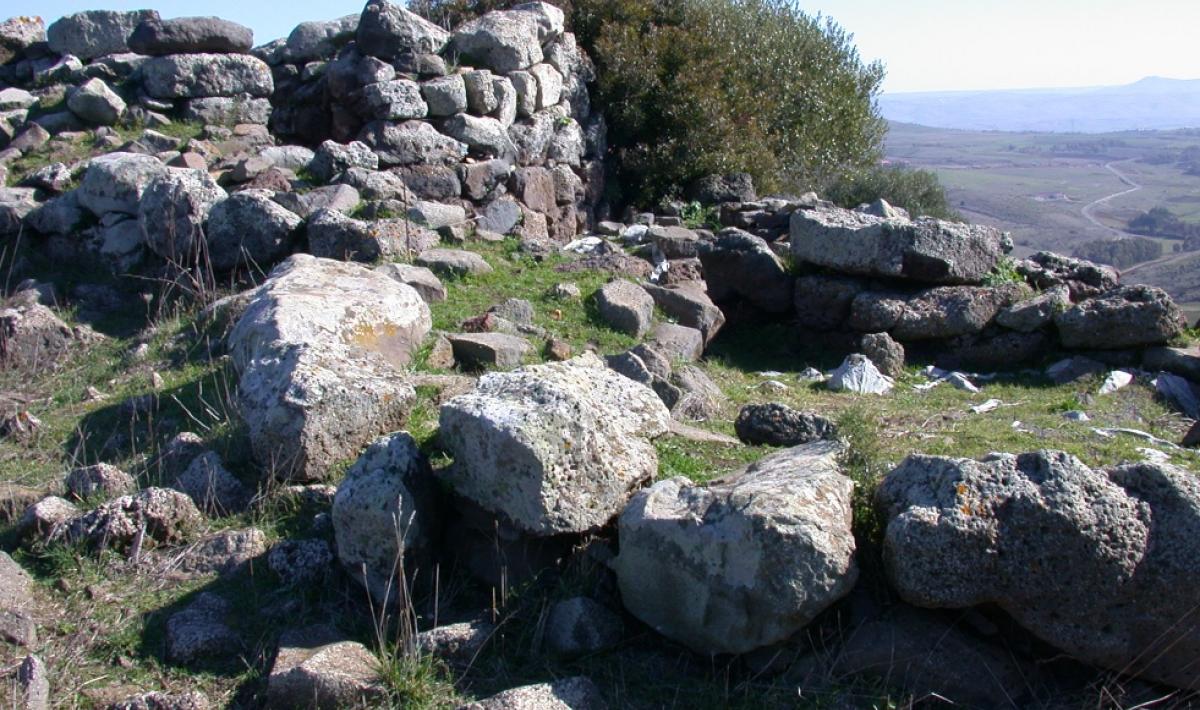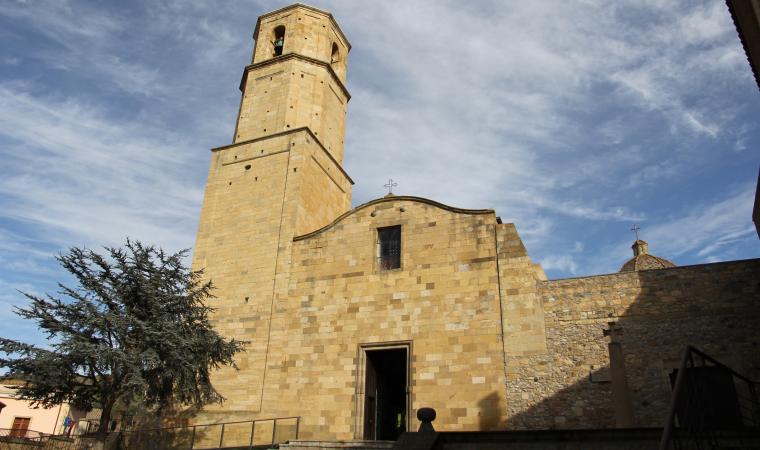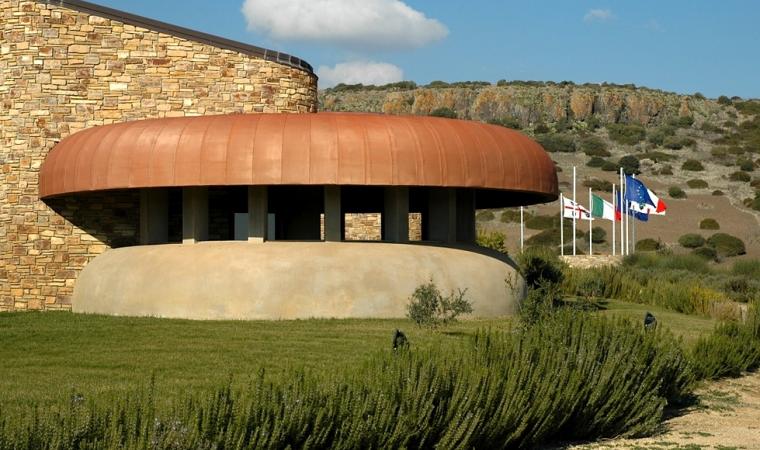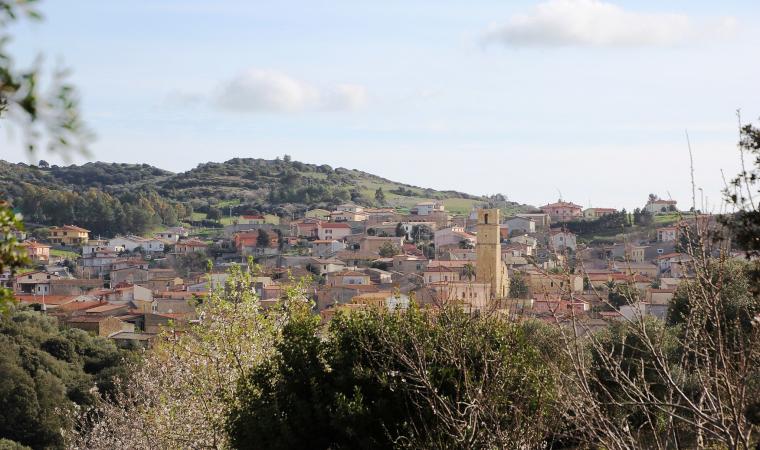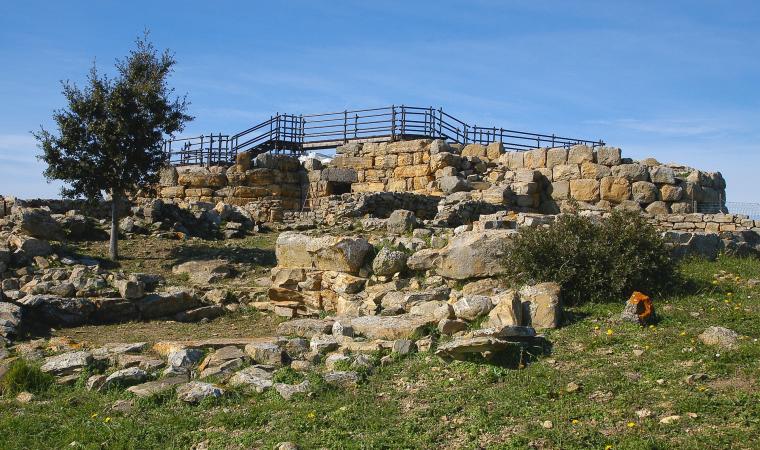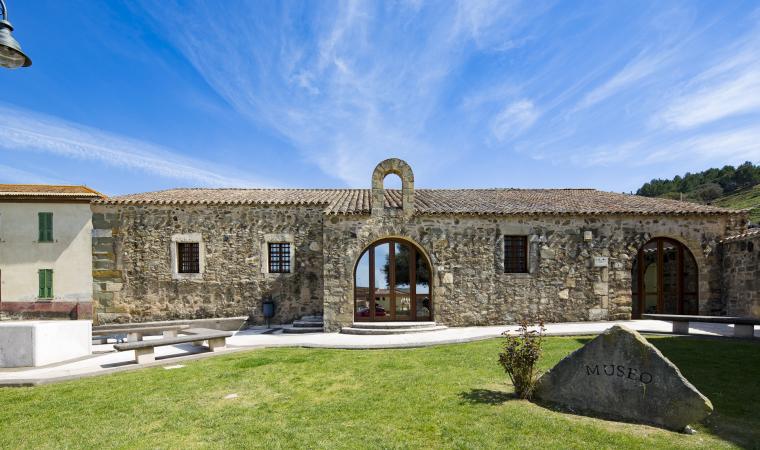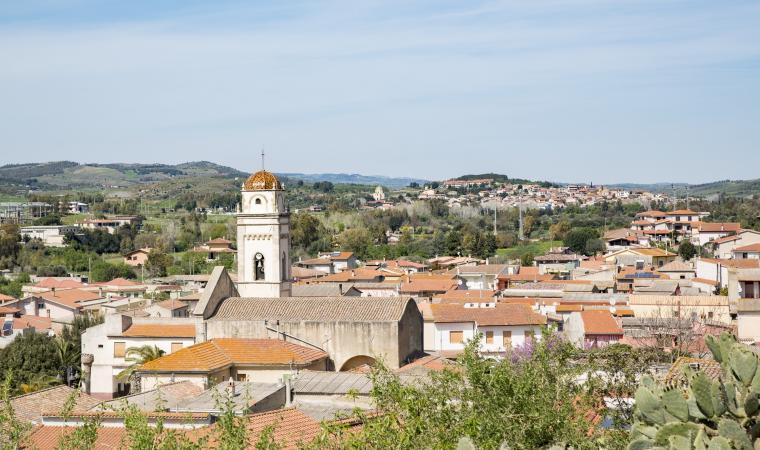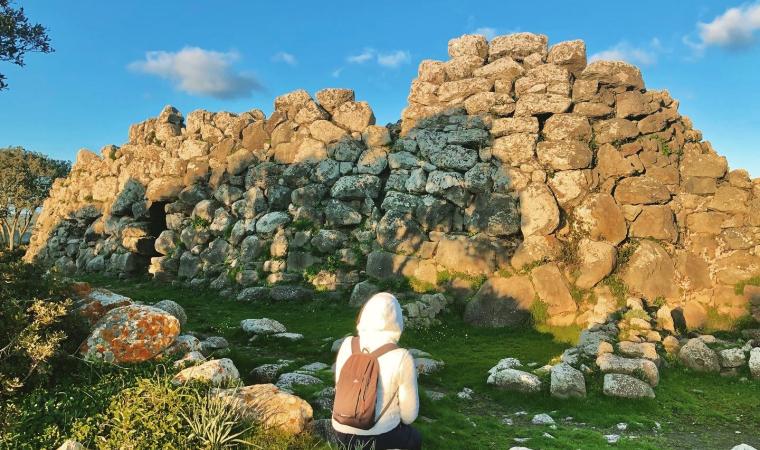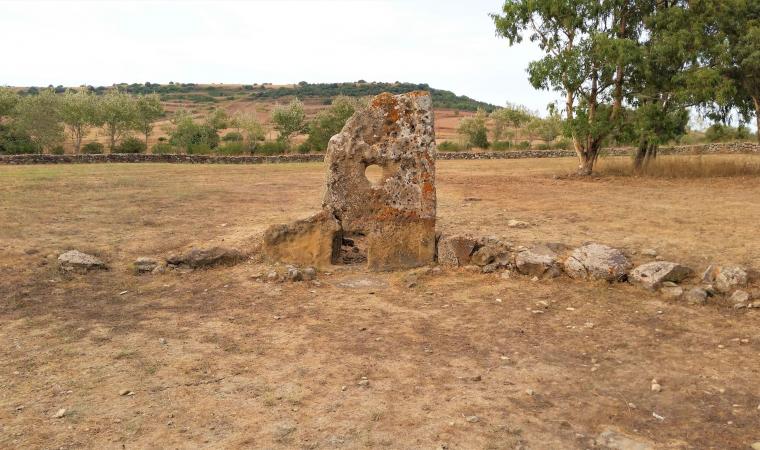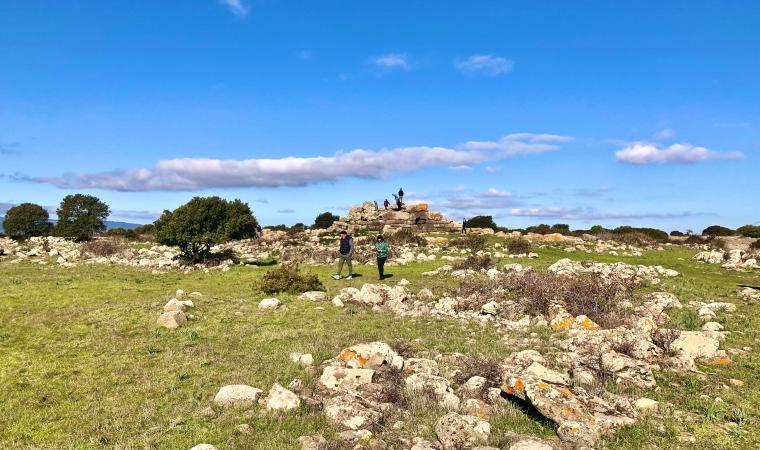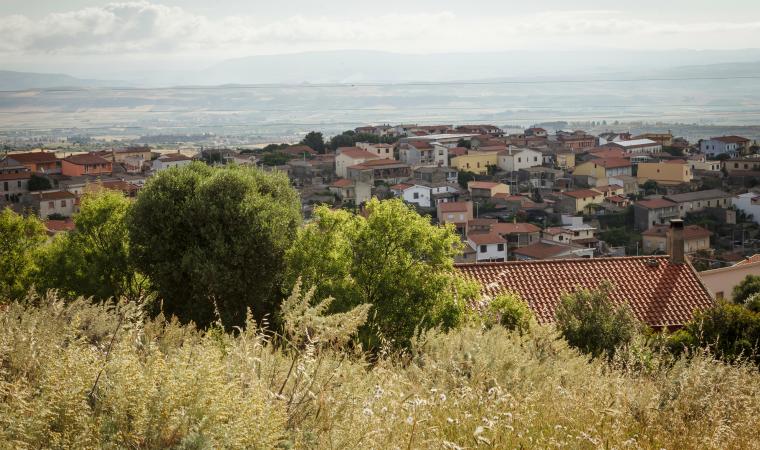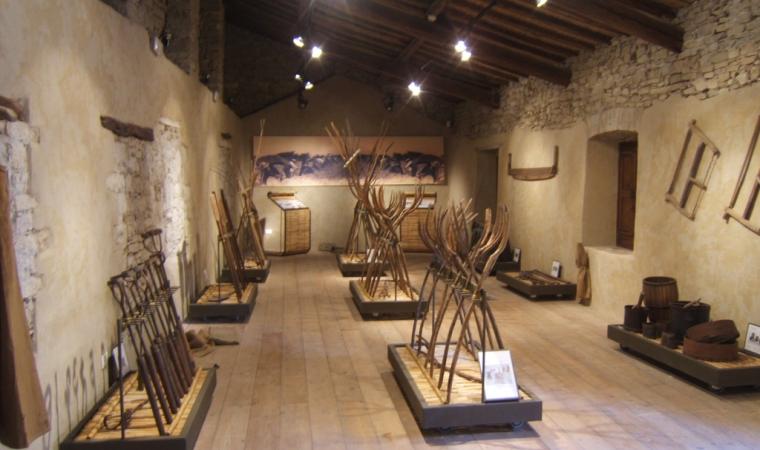It was part of a real system of ‘control towers’, in visual contact with at least four other nuraghi located near the Giara di Siddi and theCollinas plateau, and both the characteristics of its construction and the presence of mysterious marks on rock make it intriguing, giving rise to a popular belief. The Nuraghe Concali stands on top of the mountain of the same name, two kilometres north of Collinas. Its structure is complex, with a central tower partly included in a twin-lobed bastion, surrounded by a barricade. To the west, the bastion appears to incorporate a previous building, with a sub-circular layout, defined by some as a ‘pseudonuraghe’.
The nuraghe was built from basalt blocks, taking advantage of the natural rock outcrops. From the main tower of the nuraghe, with a tholos roof, two masonry arms delimit the courtyard, with a second tower overlooking it. The vegetation covers a third tower, which is smaller in size.
Other curtain walls connect to the keep, incorporating external courtyards, and one connects to the pseudonuraghe. To the south, there are traces of walls dating back to later historical phases and therefore the nuraghe Concali was probably reused in a historical period. Based on the ceramics found, it was first built in the Middle Bronze Age (17th – 14th century BC). Near the nuraghe, you will notice a rock with mysterious marks that seem to have been engraved on its surface, seemingly shaped like hooves. Popular tradition has given rise to a legend: the signs are said to be the hoofprints of Luxia Arrà, a ‘centauress’ - half woman, half winged horse - who took off from this rock to reach the valley. According to the legend, this is the location of the petrified pitchfork with which Luxia is said to have speared her beloved, after which she went mad forever and become Arrabiosa, meaning furious.
Six kilometres to the west, at the foot of the small Giara di Collinas, you will find the Giants’ Tombs of sa Sedda ‘and sa Caudela. Their unique characteristic is that they date back to different periods: tomb A, the oldest, is of the dolmen type and paved with basalt slabs; Tomb B has a pebble floor and was built in overlapping rows with gradual projection. When choosing the next stages of the archaeological tour of the area, you are spoilt for choice: a few kilometres from Collinas are the nuraghe Genna Maria in Villanovaforru, the Giants’ Tomb of su Cuaddu de Nixias in Lunamatrona and the two main archaeological sites of Siddi, the majestic Giants’ Tomb of sa Dom’e s’Orku and the archaeological-nature park of Sa Fogaia.

